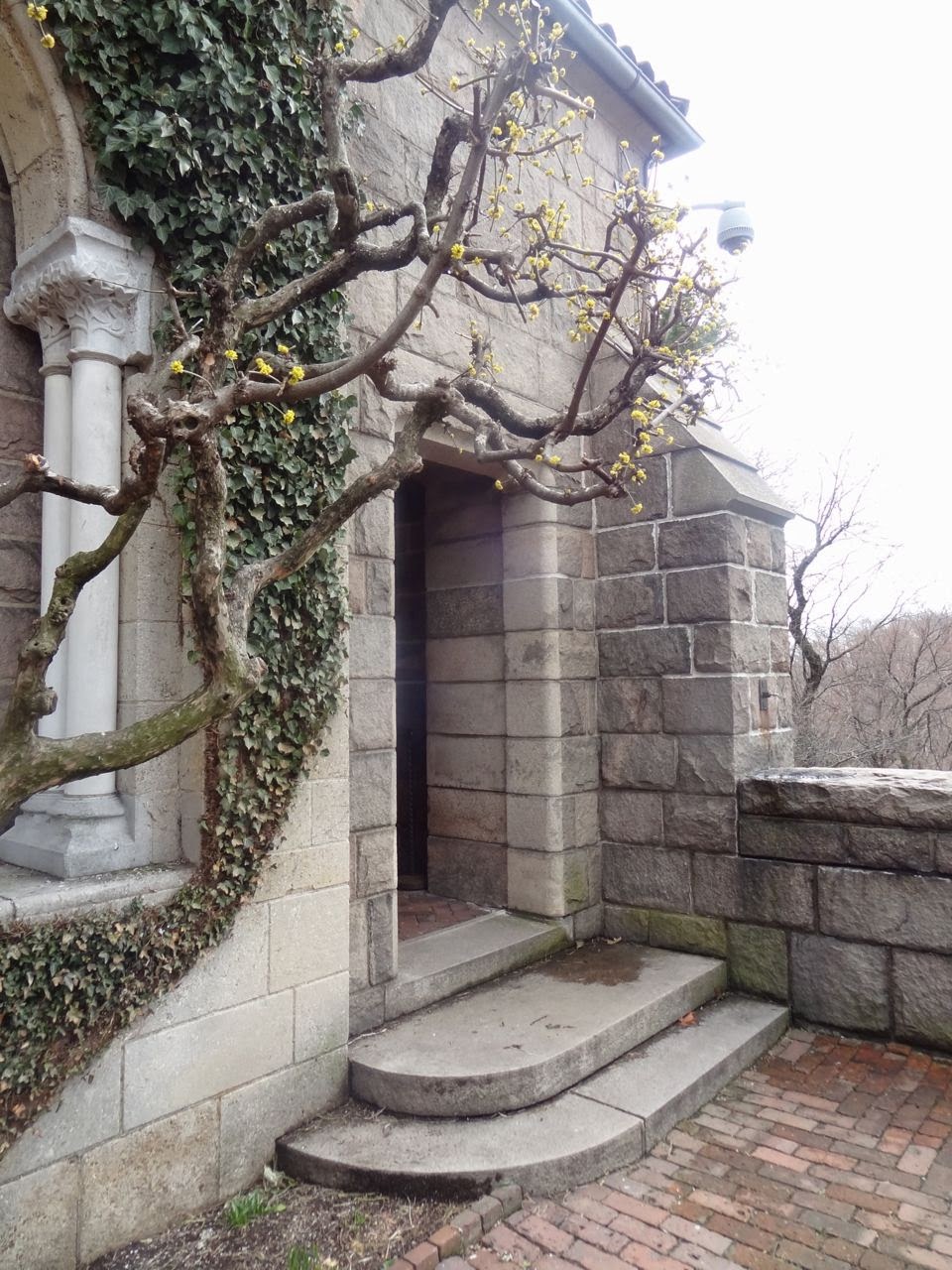The northern outpost of the Metropolitan Museum of Art, The Cloisters is located in Fort Tryon Park in Upper Manhattan, and is used to exhibit the museum's extensive collection of art, architecture and artifacts from Medieval Europe. Created by the philanthropist John D. Rockefeller, Jr., Fort Tryon Park began when he purchased the Billings Estate and other properties in the Fort Washington area and hired Frederick Law Olmsted, Jr., son of one of the designers of Central Park to create a park, which he then donated to New York City in 1935. As part of the overall project, Rockefeller also bought the extensive medieval art collection of George Grey Barnard, an American sculptor and collector, who had already established a medieval-art museum near his home in Fort Washington, and gave it to the Metropolitan along with a number of pieces from Rockefeller's own collection, including the Unicorn Tapestries. These became the core of the collection now housed at The Cloisters.
The exterior of the Cloisters on the norther tip of Manhattan in Tryon Park
The main stairwell up to the Cloisters
Equipped with an audio guide, we were able to walk around the museum listening to interviews with curators, conservators, and educators and listen to Medieval music that punctuated the fascinating narrative. We also took advantage of a special exhibition of stained glass from England's historic Canterbury Cathedral which featured six Romanesque-period windows that had never left the cathedral since their creation in 1178–80, and entitled 'Radiant Light: Stained Glass from Canterbury Cathedral' from February 25 to May 18, 2014.
Noah, one of six Romanesque-period stained glass window from England's historic Canterbury Cathedral that have never left the cathedral since their creation in 1178–80
Ornate archway leading to the 12th-century Chapel Notre-Dame-du-Bourg from Bordeaux
The collection now contains more than five thousand European medieval works of art, with a particular emphasis on pieces dating from the 12th through the 15th centuries. Notable works of architecture include the Cuixà cloister, with an adjacent Chapter House; and the Fuentidueña Apse from a chapel from Castilla y León, Spain. Among the notable works of art are seven Flemish tapestries depicting The Hunt of the Unicorn, Robert Campin's Mérode Altarpiece, and the Romanesque altar cross known as the Cloisters Cross or Bury St. Edmunds Cross. The Cloisters also holds many medieval manuscripts and illuminated books, including the Limbourg brothers' Les Belles Heures du Duc de Berry and Jean Pucelle's book of hours for Jeanne d'Evreux. An extraordinary museum, The Cloisters will for ever be on my itinerary each time I return to New York.
The 12th-century Benedictine Cuxa Cloister
Orchid blooming in the Cuxa Colister
12th-century Spanish apse from St Martin at Fuentideuna with fresco from the Catalan Pyranees
Archway into the Unicorn Tapestries Room
The Unicorn Tapestries Room featuring the famous cycle of 15th-century Flemish tapestries
'The Unicorn is Found' tapestry shows the unicorn purifying the waters for the forest animals
"The Unicorn is Attacked' by hunters, but legend says the unicorn cannot be disturbed while performing a magical act, so it tries to leap from the pursuers
The famous 'Unicorn in Captivity' tapestry shows the unicorn resting in a peaceful meadow within the confines of a circular fence
Detail from the 14th-century Belgian Merode Altarpiece
The 12th-century Pontaut Chapter House from a Cistercian abbey south of Bordeaux served as a stable until 1930 when it was rescued George Grey Barnard
Ceiling detail of the Chapter House with iron ring where cattle were once tethered
The Early Gothic Hall with 13th-century limestone windows overlooking the Hudson River and filled with Gothic stained-glass panels from the cathedrals of Canterbury, Rouen and Soissons
Medieval wooden door leading from the Early Gothic Hall to the Cuxa Cloister
Early 13th-century Cloisters from Saint-Guilhem-le-Désert
The Gothic Chapel
One of the conservationists monitoring and preserving the Medieval collection at The Cloisters
The Bonnefont Garden Cloister
Overlooking the Hudson River
A pruned espaliered pear tree budding and ready for summer
One of the first herbs bursting out from its winter sleep
Secret doorway to the Trie Cloister, currently being restored
The late 15th-century Cloister from Trie-Sur-Baise is currently being restored to upgrade the irrigation for its flowery meadow bordered with periwinkles is usually accompanied with the sound of running water from its central fountain
The richly embellished 14th-century illuminated manuscript 'The Belles Heures'
The 15th-centure Flemish tapestry 'The Falcon's Bath'
The only set of playing cards known to have survived from the Middle Ages
Detail of altarpiece at The Cloisters

































No comments:
Post a Comment